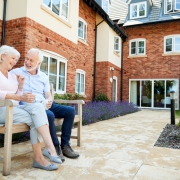Differences Between Medicare and Medicaid
Most people who work in healthcare may recognize the acronym LASA, which stands for “look-alike-sound-alike” and is usually seen when referencing medications. When it comes to federal programs, Medicaid and Medicare, in written form, look alike and they do sound alike but work very differently.
Both Medicare and Medicaid were started in 1965 under Lyndon B. Johnson’s administration in response to the inability of older and low-income people to purchase private insurance. Both Medicare and Medicaid were started in 1965 under Lyndon B. Johnson’s administration in response to the inability of older and low-income people to purchase private insurance. Medicaid is an assistance program, funded federally and at the state level, that provides coverage for health care to low-income individuals regardless of age. It is governed federally with each state administering its own plan, which can vary from one state to the next. Medicare is a federal insurance program that provides health coverage for people aged 65 and over or to those under age 65 with a severe disability such as end-stage renal disease or Lou Gehrig’s disease, also known as ALS-amyotrophic lateral sclerosis. Dependents are not typically covered.
Medicaid eligibility is needs-based, meaning both income and assets are counted when determining eligibility. Both Medicare and Medicaid will cover a broad range of health care services, including hospital stays and physician office visits, yet Medicaid will cover nursing home care, in-home care services, long term care, and transportation to receive medical care which Medicare will not pay for. It is possible to qualify for dual coverage, which means both Medicare and Medicaid will work together to provide health care coverage and lower costs.
Regarding cost, Medicaid in most instances is free of cost, though a small copay may be required depending on the plan. Medicaid can also recover against assets in a recipient’s estate after the death of the recipient. This could mean a lien is placed and executed on a recipient’s home, depending on whether a surviving spouse or blind or disabled child is residing in the home. Medicare is not free in that premiums and co-payments may be required for some parts of Medicare, and may be larger for those with a higher income, but eligibility is not income-based.
With Medicare, one has to work for about 10 years (40 qualifying quarters), at which point no premiums are required for Part A, which covers hospitalizations. Premiums may be necessary if you sign up for a Medicare Advantage plan, which is different from Original Medicare where you are permitted to purchase supplemental coverage for out of pocket costs. Because Medicare is not administered by each state, a Medicare recipient will usually have the same coverage and pay the same copays and deductibles regardless of the state of residence. Co-pays and deductibles are required for Medicare’s Part B (outpatient services) and Part D (medication) plans. Also, a financial penalty can be assessed if one does not sign up for Medicare Part B when you first become eligible, and there may be a delay in getting coverage.
Though basic differences are covered here, there is much more information to know regarding both plans, so research is encouraged before you hit the age of eligibility for Medicare to determine which Medicare plan may be right for you. Medicaid plans and coverage differ from state to state, and sometimes county to county. We would be happy to answer any questions you have about your potential eligibility for either program.
If you have questions about planning for yourself or planning for a loved one, contact our Ruston, Louisiana offices by clicking here to send us a message or give us a call at (318) 255-1760.
Sources:
- www.nerdwallet.com/blog/investing/difference-medicare-medicaid/
- www.eligibility.com/Medicaid/what-services-does-medicaid-cover
- www.Medicare.gov/sites/default/files/2018-09/10050-medicare-and-you.pdf






